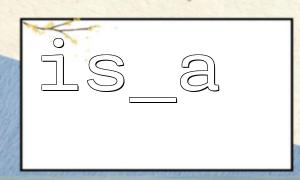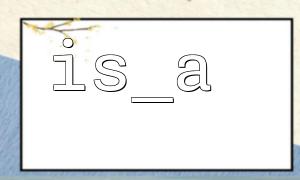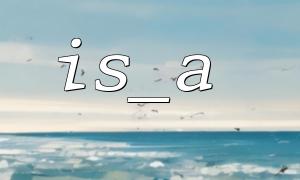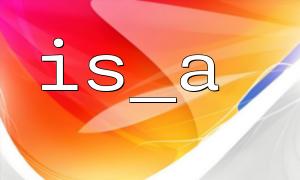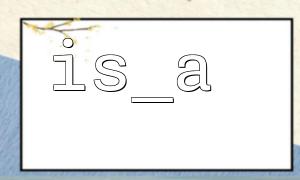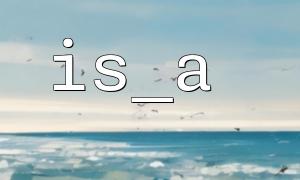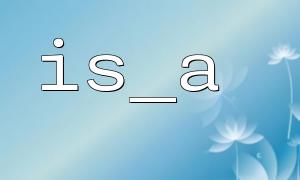In PHP, the is_a() function is commonly used to check whether an object is an instance of a specific class or implements an interface. However, when we use it to check if an object is using a specific trait, we often find that the result does not meet expectations. This article will analyze the root cause of this issue and offer several feasible solutions.
The is_a() function is used to check whether an object is an instance of a specified class or if it is a subclass of that class. The typical usage is as follows:
if (is_a($obj, 'SomeClass')) {
// $obj is an instance of SomeClass or its subclass
}
Internally, the is_a() function checks the inheritance chain and interface implementations of the object's class.
Trait is a code reuse mechanism introduced in PHP 5.4, allowing the "sharing" of code blocks across multiple classes. A trait is not a class, nor is it an interface. It cannot be instantiated on its own and does not appear in the inheritance chain.
For example:
trait Logger {
public function log($msg) {
echo $msg;
}
}
<p>class User {<br>
use Logger;<br>
}<br>
Although the User class uses the Logger trait, Logger is not a class, so it does not appear in the object's inheritance structure.
Since is_a() is used to check the class or interface relationships of an object, and a trait is neither a class nor an interface, is_a($obj, 'Logger') will return false.
$user = new User();
<p>var_dump(is_a($user, 'Logger')); // false<br>
This is because Logger is not the class or interface of the $user object, and it is not part of its inheritance chain.
Since is_a() cannot be used to check traits, a common alternative is to use PHP's reflection mechanism along with the class_uses() function.
The class_uses() function returns an array of all traits used by a class (including traits inherited from parent classes).
if (in_array('Logger', class_uses($user))) {
echo "User is using the Logger trait";
}
However, note that class_uses() by default only returns the traits directly used by the current class and does not include traits used by parent classes. If you need to get all traits used by parent classes, you can use a custom recursive function:
function class_uses_recursive($class) {
$traits = [];
$traits = array_merge($traits, class_uses($class));
} while ($class = get_parent_class($class));
return array_unique($traits);
}
if (in_array('Logger', class_uses_recursive($user))) {
echo "User is using the Logger trait (including from parent classes)";
}
<?php
<p>trait Logger {<br>
public function log($msg) {<br>
echo $msg;<br>
}<br>
}</p>
<p>class Base {<br>
use Logger;<br>
}</p>
<p>class User extends Base {}</p>
<p>$user = new User();</p>
<p>// Using is_a to check the trait, the result is false<br>
var_dump(is_a($user, 'Logger')); // bool(false)</p>
<p>// Using class_uses_recursive to check the trait<br>
function class_uses_recursive($class) {<br>
$traits = [];</p>
$traits = array_merge($traits, class_uses($class));
} while ($class = get_parent_class($class));
return array_unique($traits);
}
if (in_array('Logger', class_uses_recursive($user))) {
echo "User is using the Logger trait";
} else {
echo "User is not using the Logger trait";
}
is_a() cannot be used to check traits because a trait is neither a class nor an interface.
To check if a trait is used, you can use the class_uses() function.
If you need to check traits used by parent classes, you should recursively gather all traits from parent classes.
This method is simple and efficient for everyday use.
By understanding the nature of traits and PHP's type system, we can choose the correct method to check the relationship between an object and a trait, avoiding logical errors caused by the incorrect use of is_a().

